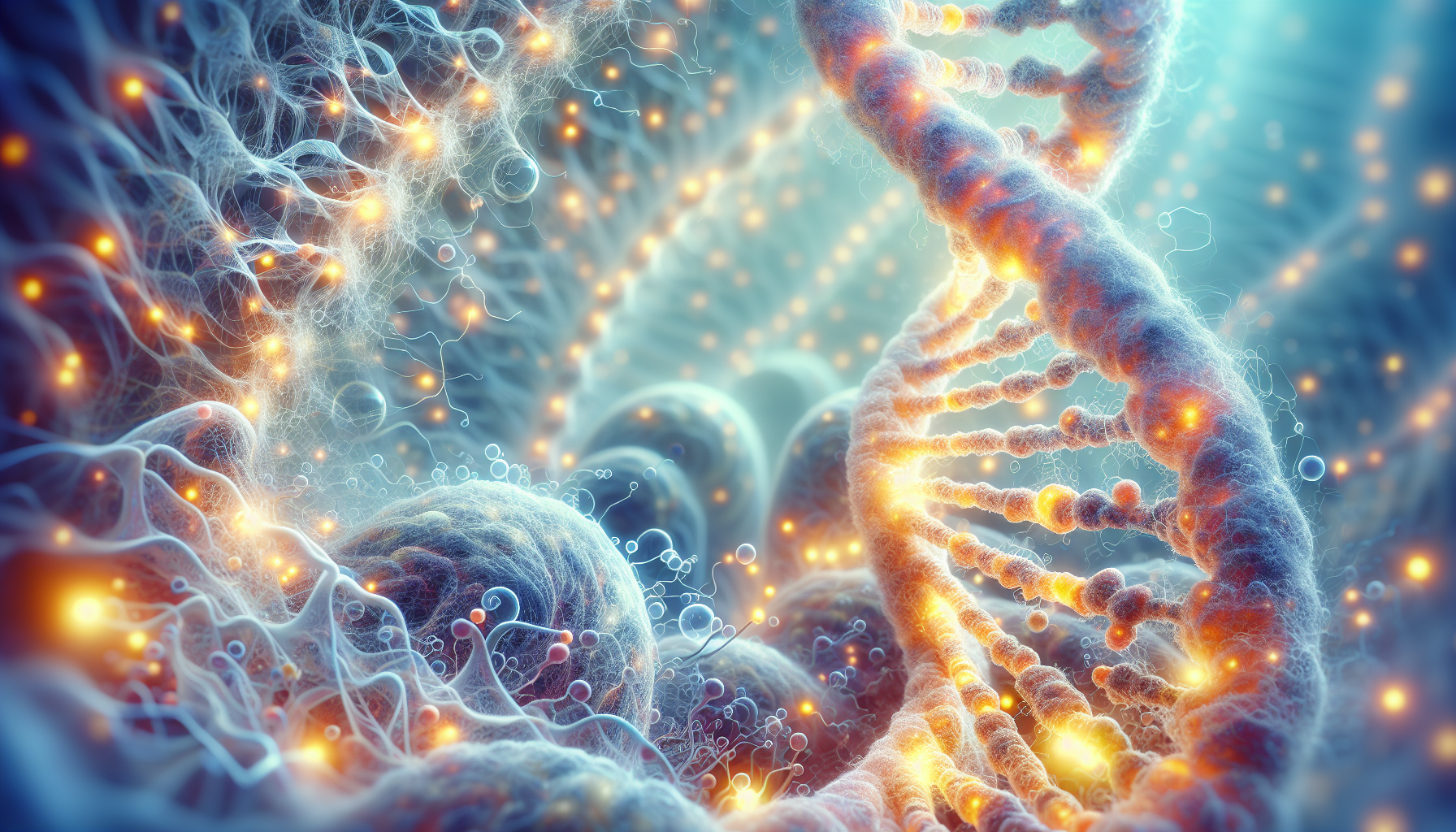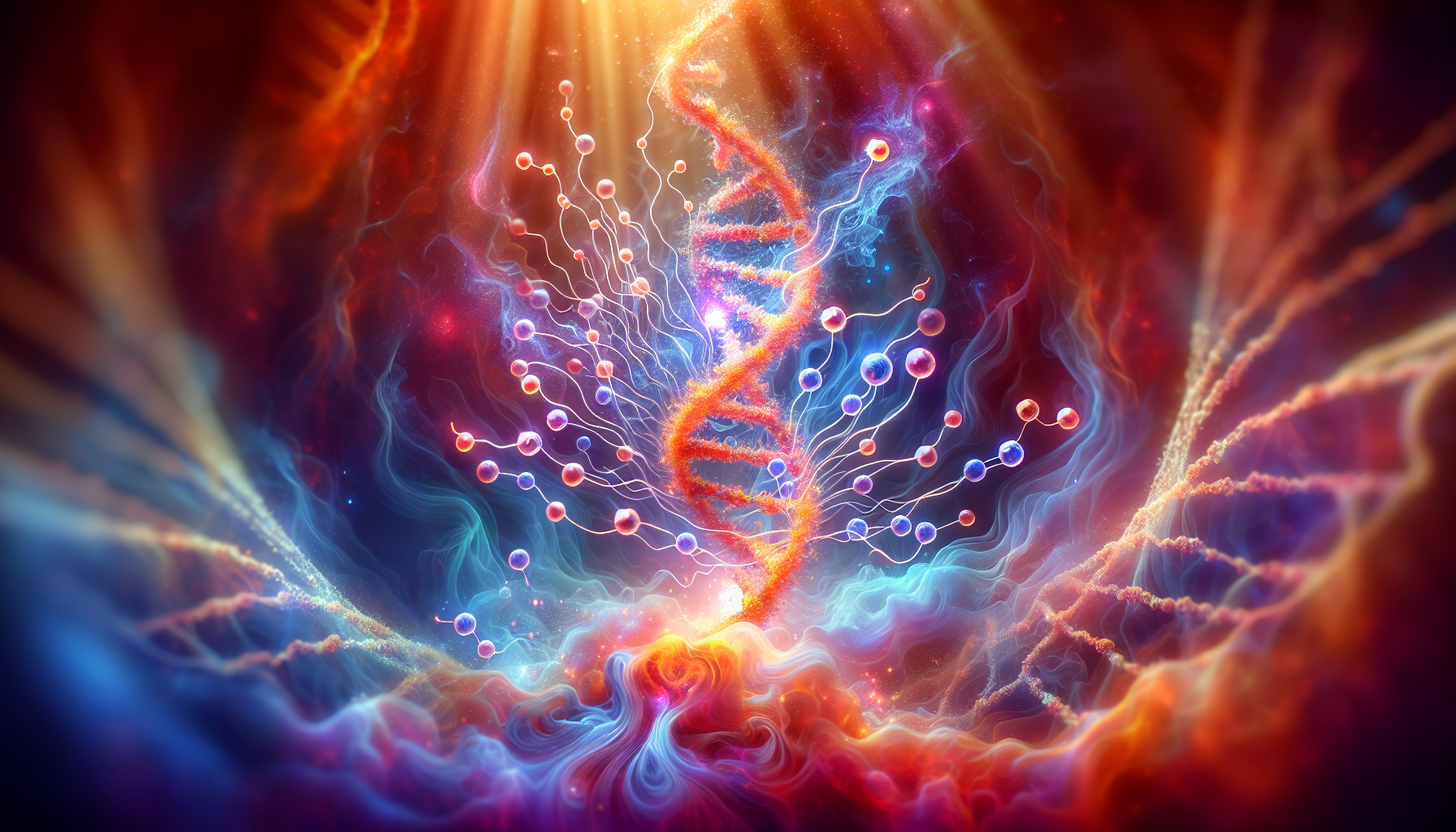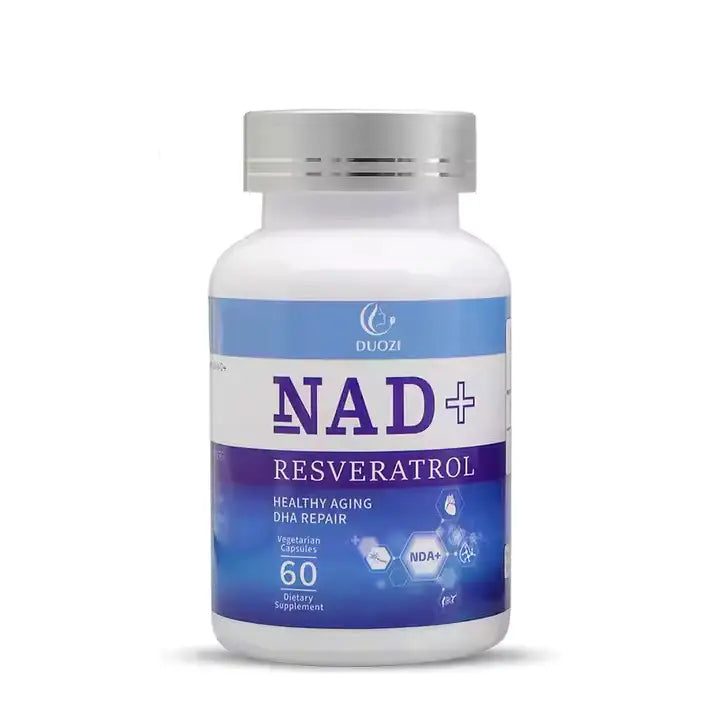Have you ever wondered what makes some people seem to age more gracefully than others? Or why some individuals maintain their vitality and youthful appearance longer than expected? The science of aging is a complex and fascinating field, and recent research has shed light on two critical components that play a significant role in this process: NAD and DNA repair. Together, these elements are instrumental in slowing down the aging process and promoting a healthier lifespan.

Understanding NAD: The Elixir of Youth
NAD, short for Nicotinamide Adenine Dinucleotide, is a molecule found in all living cells. It serves as a coenzyme in vital metabolic processes and is essential for the conversion of nutrients into energy. Beyond its role in energy metabolism, NAD is pivotal in regulating many biological processes that impact aging.
The Role of NAD in Cellular Health
NAD plays a vital role in maintaining cellular health. It is a coenzyme that aids in redox reactions—critical chemical reactions that occur when molecules are reduced or oxidized. These reactions are fundamental to cellular energy production and are vital for synthesis and repair of damaged cellular components.
How NAD Levels Decline with Age
As you age, the levels of NAD in your cells decline. This decrease is linked to a variety of age-related diseases and conditions. A lower level of NAD is associated with decreased mitochondrial function, increased DNA damage, and impaired cellular stress response. These factors contribute to the aging process and the gradual decline in cellular function.
The Benefits of Boosting NAD Levels
Increasing NAD levels in your body can have a range of beneficial effects. Enhanced NAD levels can improve mitochondrial function, increase insulin sensitivity, and reduce inflammation—each of which has a role in promoting longer and healthier life. Additionally, NAD is essential for the activation of sirtuins, a family of proteins involved in metabolic regulation, DNA repair, and inflammation reduction.
DNA Repair: The Guardian of Genetic Information
DNA is the blueprint of life. Every cell in your body contains DNA, which carries the instructions necessary for growth, development, and functioning. However, DNA is not impervious to damage. It can be harmed by various factors, including UV radiation, pollution, and internal cellular processes. DNA repair mechanisms act as a protective buffer to guard against this damage.
The Different Types of DNA Damage
DNA damage comes in many forms. Some common types of DNA damage include single-strand breaks, double-strand breaks, and base modifications. Each type of damage requires a specific repair mechanism to restore DNA to its original state.
Key DNA Repair Mechanisms
Your body is equipped with a set of sophisticated DNA repair processes to fix damaged DNA. These mechanisms include:
- Base Excision Repair (BER): Corrects small, non-helix-distorting base lesions.
- Nucleotide Excision Repair (NER): Removes bulky helix-distorting lesions.
- Mismatch Repair (MMR): Fixes mispaired nucleotides during DNA replication.
- Homologous Recombination (HR): Repairs double-strand breaks using a sister chromatid as a template.
- Non-Homologous End Joining (NHEJ): Repairs double-strand breaks without a template.
The Impact of Compromised DNA Repair on Aging
As you grow older, your body’s ability to repair DNA diminishes, leading to accumulation of genetic damage. This accumulation can cause cells to malfunction or die, contribute to the development of diseases, and lead to the visible signs of aging. Therefore, efficient DNA repair is vital for preserving genetic stability and promoting healthy aging.
NAD and DNA Repair: An Intricate Partnership
NAD and DNA repair mechanisms are not isolated systems. They work in tandem to maintain cellular integrity and slow the aging process. This relationship is built on the dependency of DNA repair enzymes on NAD.
How NAD Supports DNA Repair Enzymes
NAD serves as a substrate for enzymes involved in DNA repair, including poly(ADP-ribose) polymerases (PARPs). PARPs are a family of enzymes that detect and initiate repair of single-strand breaks in DNA. When DNA damage occurs, PARPs consume NAD to add ADP-ribose polymers to proteins involved in repair, signaling the presence of damage and facilitating repair processes.
The Direct Connection Between NAD and Sirtuins
Sirtuins, which require NAD to function, play a critical role in enhancing DNA repair. They modulate chromatin structure, regulate transcription, and promote DNA double-strand break repair—crucial for genomic stability. Sirtuins also influence cellular stress response and longevity through their effect on DNA repair.
The Cycle of DNA Damage and NAD Consumption
There’s a cycle at play where DNA damage increases the demand for NAD. As you face more DNA damage, your need for NAD skyrockets, driving a demand for pathways that support NAD production. Without sufficient NAD, the efficacy of DNA repair mechanisms declines, leading to increased cellular damage and aging.
Intricacies of Enhancing NAD and DNA Repair
Given the interplay between NAD and DNA repair, researchers are exploring ways to enhance these systems for slowing aging. A few promising interventions aim at elevating NAD levels, optimizing DNA repair, and supporting overall cellular health.
Nutritional Interventions for NAD
Nutritional strategies are highly effective tools for boosting NAD levels. Foods rich in precursors to NAD production, such as nicotinamide riboside (NR) and nicotinamide mononucleotide (NMN), are regularly explored. Other nutrients that can impact NAD metabolism include:
- Tryptophan: An amino acid that can be used to produce NAD.
- Vitamin B3 (Niacin): Participates in NAD biosynthesis.
Supplements to Increase NAD
Supplementing with NR and NMN has gained popularity due to their ability to boost NAD levels. These supplements are considered safe for most people and have been associated with improved energy metabolism, enhanced mitochondrial function, and better DNA repair.
Lifestyle Changes to Enhance DNA Repair
In addition to supplements and diet, lifestyle changes can make a difference. Practices like regular exercise, stress reduction, and adequate sleep can positively impact DNA repair mechanisms. Exercise, in particular, increases the efficiency of the antioxidant system and enhances DNA repair capacity.
Emerging Therapies and Research
Advancements in medical treatment are also promising. Researchers are investigating drugs that activate PARPs, boost NAD, and enhance sirtuin function. These therapies may offer future pathways to support and accelerate DNA repair processes.

Bridging Science and Everyday Life
Understanding NAD and DNA repair’s role in aging is not just an academic exercise; it has practical implications for your everyday life. Adopting a lifestyle that supports these processes can contribute to a healthier, more vibrant life.
Practical Tips for Supporting NAD and DNA Repair
-
Incorporate NAD Boosting Foods:
- Include foods high in NR and NMN, such as milk, yeast, and green vegetables.
-
Exercise Regularly:
- Engage in consistent physical activity to stimulate your body’s DNA repair mechanisms.
-
Practice Stress Management:
- Activities like meditation, yoga, and deep breathing can reduce stress and improve DNA repair efficiency.
-
Get Quality Sleep:
- Prioritize sleep, as it plays a crucial role in DNA synthesis and repair.
Benefits of Integrating Knowledge into Lifestyle
By integrating the principles of NAD and DNA repair into your lifestyle, you can actively slow down the biological aging process, increase longevity, and improve life quality. Embracing science-backed methods today can pay significant dividends in your well-being tomorrow.
The Bigger Picture: Future Implications
As research progresses, the possibilities of influencing the aging process through NAD and DNA repair expand. Future breakthroughs could lead to innovative treatments that further decelerate aging and combat age-related diseases.
Research Directions and Innovations
Scientific exploration continues to dissect the intricate biochemistry of aging, potentially leading to groundbreaking insights. Future areas of focus might include:
-
Gene Therapy:
- Developing therapies to correct defects in DNA repair machinery.
-
Advanced Pharmacology:
- Crafting medications that mimic or enhance the natural processes of NAD metabolism and DNA repair.
Ethical and Societal Considerations
While the science is promising, ethical concerns arise. The implications of extending life span and altering the natural course of aging pose questions about the societal, economic, and environmental impact.
Conclusion
NAD and DNA repair are integral to cellular health and longevity. By promoting effective DNA repair and maintaining optimal NAD levels, you have the power to influence the aging process positively. Understanding these intricate systems opens the door to practical applications that can enhance your well-being and life span. Embracing better nutrition, lifestyle, and emerging scientific insights will support your journey towards a longer, healthier, and more fulfilling life.
